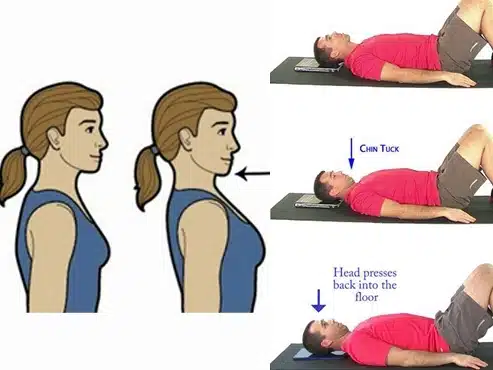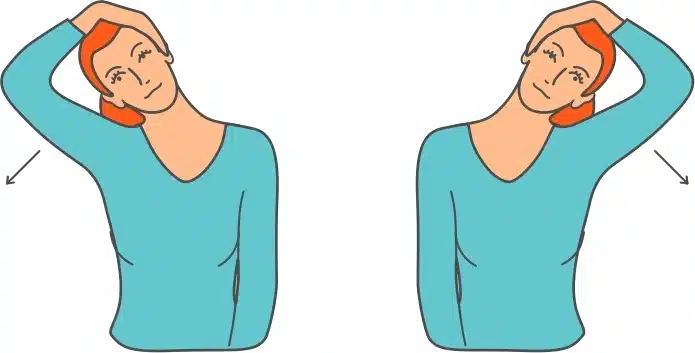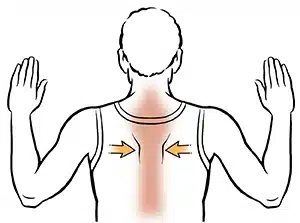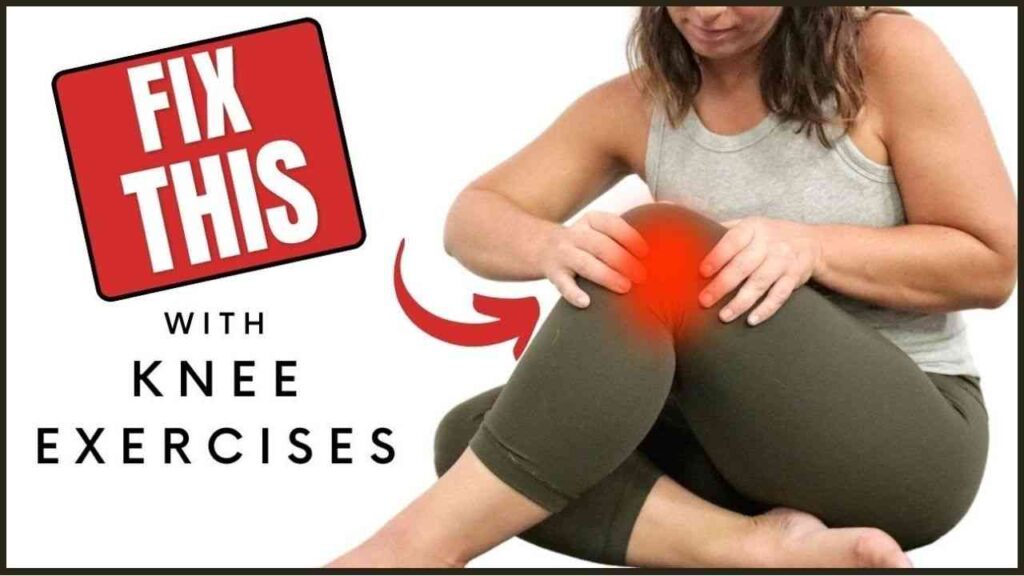Best exercises for upper back pain, neck pain | Physiotherapy exercises for neck pain
Nowadays neck pain is the most common type of discomfort among young adults and old age individuals. It can be caused by any trauma, incorrect posture, overuse of neck muscles, degenerative changes, and an especially long time of computer and mobile phone use. In this article, we will discuss the five best and proven physiotherapy exercises for neck pain relief, which our certified physiotherapist chooses.
You can perform these exercises safely at home if you feel any pain in your neck and shoulder region. If you are feeling severe pain and discomfort in your neck, it is recommended you consult with a certified and experienced physiotherapist of The PhysioFix.
Some common reasons for neck pain:
When it comes to the reason for neck pain, we discuss it by dividing them into two segments, one is pathological pain and another is mechanical pain. Pathological pain means the pain and discomfort coming due to pathological changes in your musculoskeletal system, such as cervical spondylitis, cervical spondylosis, slipped disc, arthritis, neural compression etc.
Mechanical causes, such as poor posture, muscle stiffness, overuse of neck muscles and a long time of computer and mobile phone use also cause neck pain.
Some common reasons for neck pain are:
- Traumatic injuries of your neck(such as whiplash from a minor car collision)
- Adaptive poor posture
- Computer use for a long time
- Overnight sleep in an uncomfortable position
- Post-surgical pain
- Bike riding on a stiff position
- Strain to your neck and shoulders due to lifting heavy objects.
Best physiotherapy exercises for neck pain relief:
When it comes to the best exercises to ease your neck pain, our Physiotherapists have created a great list of them that help to relieve neck pain and increase mobility and overall function of your neck and shoulder region. Our exercises are created by stretching, strengthening and some mobility exercises, look at them and learn properly how to perform these in your own space.
01. Chin tuck & pillow press
To perform Chin tuck & pillow press exercise you need a bed and a soft pillow. This is a safe exercise if you are experiencing stiff neck or neck pain. This exercise aims to strengthen deep neck flexors, help to improve neck and head posture, enhance stability, alleviate pain, reduce neck tension and help with tension headaches.

To perform a Chin Tuck & Pillow Press exercise, follow these steps:
- Lie on your back with a small pillow under your head.
- Press your chin and head straight back into the pillow, creating a slight double chin.
- Hold this position for 3-5 seconds, then relax.
- Gradually increase the hold time to 10–20 seconds.
- Repeat this exercise 3-10 times.
02. Side-to-side bends (lateral neck flexion)
Lateral neck flexion is another best physiotherapy exercises for neck pain relief and prevention. The lateral neck Flexion exercises offer various benefits improving reducing tension of the neck muscles, enhancing flexibility and improving overall neck health. If you practice these exercises Consistently it reduces the risk of chronic neck pain by releasing tension and promoting overall neck health.

To perform a lateral neck flexion exercise, follow these steps:
- Stand with your feet hip-width apart, toes pointing forward, and arms by your sides.
- Stabilize your spine by tightening your abdominal muscles and pulling your shoulders down and back without arching your lower back.
- Slowly bring your right ear towards your right shoulder until you feel the stretch.
- Maintain proper body alignment with shoulders down and back.
- Hold the stretch for 5-10 seconds before returning to the starting position.
- Repeat the same movement on the left side for a total of 4-6 repetitions.
To modify this exercise and get maximum benefits follow these tips:
- To increase the stretch, gently place your hand on the top of your head and apply light pressure with your fingertips.
- For an additional stretch targeting the sternocleidomastoid muscle, after laterally flexing the neck, slowly lift your chin upwards.
- Perform the exercise slowly and calmly, avoiding excessive force when using your hand to enhance the stretch.
03. Forward and backward neck bends
Forward and backward neck bending exercises are beneficial for relieving neck pain and improving cervical posture. Nowadays forward head posture is a common dysfunction of office workers and students, where the head is positioned with the ears, in front of your body midline, causing neck pain, and stiffness. This exercise helps to relieve neck pain, reduce neck muscle weakness and improve mobility of the overall cervical region.

To perform a Forward and backward neck bends exercise, follow these steps:
Forward Neck Bend:
- Tuck your chin in.
- Roll your head forward to feel a gentle stretch at the back of your neck.
- Return to the starting position.
- Hold the stretch for 5-10 seconds before returning to the starting position.
- Repeat the same movement for a total of 4-6 repetitions.
Backward Neck Bend:
- Roll the shoulders in a circle, bringing the blades of the shoulders together.
- Let go to propel yourself forward.
- Hold the stretch for 5-10 seconds before returning to the starting position.
- Repeat the same movement for a total of 4-6 repetitions.
04. Neck Rotation
Neck rotation exercises are one of the best exercises for the relief of neck pain and stiffness. Improving flexibility and reducing strain are the primary benefits of this exercise, what you may get. If you are suffering from chronic neck pain, severe pain, or weakness you can consult a certified physiotherapist from the PhysioFix. Overall neck exercises are beneficial for individuals of all ages as long as proper form and techniques are maintained.

To perform the neck rotation exercise while lying, follow these steps:
- Lie on your back with your knees bent and feet flat on the floor.
- Keep ears, shoulders, and hips aligned without pressing the lower back to the floor.
- With your neck relaxed, turn your head to one side until you feel a stretch in the neck muscles. Do not push through pain.
- Hold for 5 seconds, then turn to the other side.
- Repeat 5 times on each side, keeping your shoulders on the floor and avoiding lifting your chin as you turn your head.
05. Shoulder Blade Squeeze
The shoulder blade squeeze exercise is mainly focused on strengthening the muscles between the shoulder blade, especially targeting the rhomboids and the trapezius muscle. This exercise helps to improve upper limb and shoulder stability, and posture and reduce strain. When you strengthen these muscles, it can reduce the risk of rotator cuff issues and potentially assist in reducing the chance of arthritis in the shoulder.

To perform the neck rotation exercise while lying, follow these steps:
- Begin with your elbows bent at 90 degrees and resting at your sides.
- Move your elbows and shoulders backwards while squeezing your shoulder blades together.
- Hold the squeeze for about five to ten seconds to engage the muscles effectively.
- Relax your shoulders and return to the starting position.
- Repeat the same movement for a total of 4-6 repetitions.
Conclusion:
To get relief from joint pain and stiffness three components are primarily responsible, these are muscle tightness, joint stiffness and flexibility of the particular joint. When you are going to perform the above exercises, make sure to warm up or do some basic movements of the neck joint. Perform all the exercises slowly and in proper form. To get maximum benefit you can use your hand to stretch properly for all neck muscles.
When you are performing, perform slowly, at the endpoint hold for 5 seconds, and perform at least 5 to 6 repetations. These physiotherapy exercises for neck pain can be highly responsible for relieving tension and discomfort in the neck and shoulders, promoting better posture and reducing pain.
References:
- https://www.healthline.com/health/neck-flexion
- https://www.tummee.com/yoga-poses/standing-neck-bends-left-right
- https://myhealth.alberta.ca/Health/aftercareinformation/pages/conditions.aspx?hwid=zp4468
- https://www.progressivechiropractic.com/therapeutic-exercises/018-chin-tuck-neck-curl-foam-roll.html


